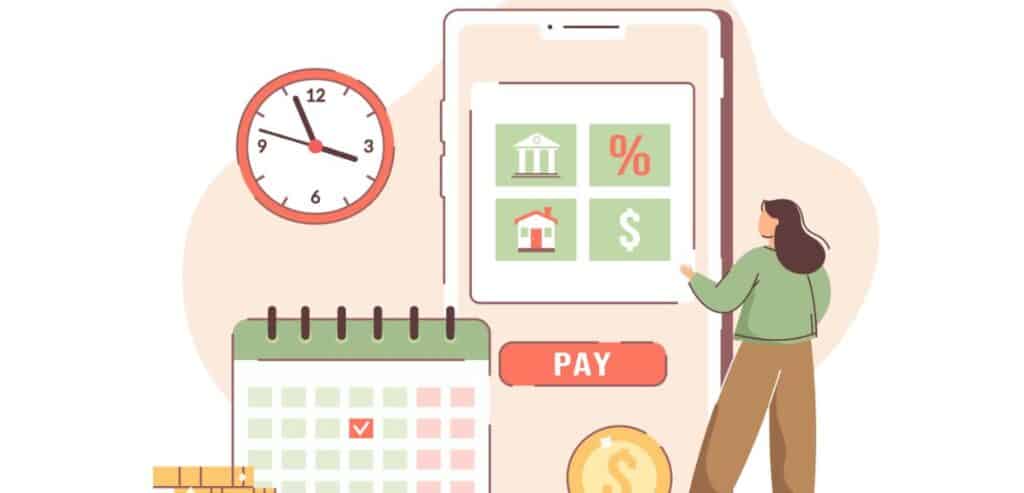
By Lauren Knight September 10, 2025
Long celebrated for its capacity to promote healing, relaxation, and balance, massage clinics require more than just skilled practitioners and serene surroundings to operate a spa. Under the calming music and aromatherapy is a business that relies on effectiveness, trust, and dependable systems to succeed.
Processing payments is one of the most important aspects of this business foundation. The way payments are received, tracked, and handled has a direct impact on profitability, client satisfaction, and overall growth, regardless of the size of the business—a single independent massage therapist running a small studio or a multi-location clinic serving clients throughout a city.
Processing payments affects client satisfaction, retention, and operational efficiency for massage businesses. It’s not just about making money. However, face vastly different challenges and opportunities when it comes to choosing the right payment solutions. Understanding these differences is critical for creating a system that supports both client convenience and business sustainability.
Independent Massage Clinics and Their Payment Realities

The financial structure is typically tight for small studios or independent massage therapists. Many independent practitioners must strike a balance between having a tight budget and offering a flawless client experience. Simplicity is frequently the focus of payment processing for these clinics.
Customers anticipate safe transactions that foster trust, speedy checkout options, and flexible payment options like digital wallets, debit cards, and credit cards. Independent clinics frequently look for providers with low setup costs and clear pricing structures because they value affordability over complexity.
Because it provides predictable costs without confusing tiers or fluctuating interchange rates, flat-rate processing, for instance, frequently appeals to these businesses. Predictability brings comfort to a therapist who handles fewer transactions every day. Additionally, accepting payments anywhere—even outside of physical locations—is made simple by mobile card readers or app-based systems.
The Personal Touch and Customer Expectations
The close client relationship is what distinguishes independent massage therapists. Because of the individualized attention and strong bond with their therapist, clients frequently select these environments. Therefore, payment methods must convey the same level of convenience and care. A seamless checkout process is the last interaction in a thoughtfully planned experience, not just a transaction.
Imagine having to deal with a cumbersome or antiquated payment process after enjoying a soothing massage. Clients may become uncomfortable due to the disruption in flow. For this reason, a lot of independent therapists use digital receipts, contactless payments, and contemporary payment apps.
Convenience guarantees that clients depart feeling as at ease as they did during the session. Technology must stay unseen in this setting, adding to rather than disrupting from the experience.
Multi-Location Clinics and Their Complexities
Multi-location massage clinics face the opposite challenge: complexity, whereas independent clinics thrive on simplicity. Payment systems need to do much more than simply process a card swipe in a setting with numerous therapists, a wide range of customers, and centralized administration.
These companies require solutions that manage higher transaction volumes, facilitate centralized reporting, and unify data across locations. Advanced systems that integrate with membership management, loyalty programs, appointment scheduling, and even payroll are frequently preferred by multi-location clinics.
Larger companies need dashboards that offer a broad overview of performance across all locations, in contrast to lone practitioners who can personally keep an eye on every detail. Scalability and customization are crucial because they guarantee that the payment system will grow with the clinic. In addition to seamless transactions, operational coherence is maintained throughout the entire network.
Memberships, Packages, and Recurring Billing
Memberships and package offers are frequently used by massage businesses, especially those with multiple locations, to generate recurring income. A customer may purchase a package in advance at a discounted price or pay monthly for a predetermined number of massages. This generates a consistent flow of revenue, but it also calls for payment systems that can easily manage ongoing billing.
Recurring payments may be less common for independent therapists, but they are still beneficial, particularly for clients who are dedicated to long-term wellness. Processors that can securely store payment information and automate charges are necessary when offering packages or prepaid sessions.
However, multi-location clinics frequently manage extensive membership programs with hundreds or thousands of clients who demand accurate, prompt billing. Here, client retention and trust are directly impacted by the payment provider selection. A missed charge or duplicate billing error can undermine the credibility of an entire brand.
Security and Compliance Concerns

Security is still the top priority when it comes to processing payments for massage clinics, regardless of their size. Clients entrust sensitive financial information in addition to their physical health. Independent therapists especially benefit from choosing providers that prioritize secure card processing for solo practitioners—this ensures PCI compliance, encryption, and fraud prevention without overwhelming complexity.
However, the risk surface for multi-location clinics is higher. There is a greater chance of fraud or mistakes when more transactions and more employees are interacting with clients. Strong access controls, safe customer data vaults, and sophisticated fraud detection are essential.
Furthermore, robust systems are necessary for compliance with local and federal regulations, including data privacy laws, which may not be provided by small-scale solutions. Prioritizing trust through secure payment processing is a must for both kinds of businesses.
The Role of Technology Integration
In today’s digitally-first world, where scheduling, marketing, payments, and client communications are all becoming more interconnected, massage clinics operate. Lightweight integrations, such as connecting a scheduling app with a payment processor to enable online booking by clients to prepay, are frequently advantageous for independent clinics.
Therapists save time, checkout is streamlined, and no-shows are decreased. However, multi-location clinics need all-inclusive platforms that combine full-scale operations and payments. Payments are not handled separately thanks to integration with staff scheduling systems, analytics dashboards, and customer relationship management (CRM) tools.
Rather, they integrate into an extensive framework that optimizes effectiveness. Clinics that don’t incorporate payments into their larger processes run the risk of falling behind rivals who leverage technology to boost customer satisfaction and company expansion by 2025.
Data Insights from Payment Platforms
In addition to handling transactions, modern payment platforms also produce data that can be used to inform more intelligent business choices. These insights could be used by independent massage therapists to monitor the most popular services or identify periods of high booking demand.
Marketing and scheduling plans can be influenced by this data. The value of data increases for clinics with multiple locations because managers can compare branch performance, identify trends, and more efficiently allocate resources. Additionally, payment data aids in upselling opportunities, operational consistency, and anomaly detection. Strategic use of payment insights turns them from a back-end requirement into a growth engine.
Cash Flow Management and Settlement Times

Cash flow is essential for independent massage therapists. Budgets may be strained by high reserve requirements or delayed settlements. Quick access to capital—in certain cases, same-day deposits—enables small businesses to stress-free pay for marketing, supplies, and rent.
Therefore, it is crucial to select processors with clear settlement policies. Cash flow management is just as important in multi-location clinics, despite their larger operations. Consistent access to revenue is necessary for marketing budgets, payroll, and multi-space rent.
When reserves are imposed, larger companies are subject to more scrutiny, even though they may be able to negotiate better settlement terms with processors. Clinics can prevent needless strain on operations by being aware of how various processors manage settlement across independent and multi-location businesses.
Cost Structures and Pricing Models
Every massage business has to pay processing fees, but depending on the size of the business, how they are set up can have a significant impact. For predictability, independent clinics frequently choose flat-rate pricing, even if it means paying a little bit more for each transaction. For them, interchange-plus pricing’s complexity is outweighed by the peace of mind.
On the other hand, interchange-plus pricing models, in which expenses are more closely linked to the real interchange rates, are frequently advantageous for multi-location clinics. While this requires greater oversight, it typically results in significant savings at higher transaction volumes.
At scale, the ability to negotiate unique contracts with processors also becomes advantageous. In this sense, the same pricing structure that works well for a big clinic might be too complicated for a solo practitioner.
Customer Experience and Payment Flexibility
Since massage therapy is a personalized service, the cost is a component of the whole experience. Whether it’s contactless tap, digital wallets, or conventional credit cards, independent therapists need to make sure their clients can pay however it’s most convenient for them.
Providing payment plans or split payments to customers looking for reasonably priced wellness solutions can also increase customer loyalty. Flexibility extends beyond the actual transaction for clinics with multiple locations. They frequently serve group packages, gift card purchases, and corporate wellness initiatives.
These particular requirements must be accommodated by payment systems while maintaining a smooth checkout process at every location. Clinics can easily serve a variety of customers because of flexibility, which turns into a competitive advantage.
Payment Processing and Client Retention
Payment systems can have a significant impact on customer retention in addition to being convenient. Offering simple options, such as prepaid packages or saved cards on file, in independent massage parlors helps customers schedule their next appointment without hesitation.
Customers are more likely to come back if the financial transaction goes smoothly. Payment systems for clinics with multiple locations can be further enhanced by integrating with membership structures and loyalty programs. A client is more likely to stick with the same clinic for the rest of their wellness journey if they feel rewarded for returning. Long-term revenue and customer trust are both increased by this.
The Human Factor: Staff Training and Consistency

The effectiveness of technology depends on its users. Since they handle their own payment system, independent therapists find it easy to learn how to use a new one. Onboarding is quick and easy thanks to mobile readers and flat-rate apps. However, maintaining staff consistency becomes difficult in clinics with multiple locations.
The system is used by managers, therapists, and receptionists, and mistakes can result in lost income or angry customers. User-friendly systems, transparent procedures, and thorough training are crucial. In this way, processing payments involves more than just technology; it also involves enabling people to use it appropriately.
Future Trends and Evolving Client Demands
Massage salons, whether standalone or multi-location, need to keep up with the latest developments in digital payments. A wider change in how consumers view transactions is reflected in the acceptance of contactless payments, buy now-pay later plans, and even digital currencies. To keep things simple, independent clinics might follow these trends carefully, providing only the most popular options.
However, to set themselves apart, multi-location clinics are more likely to try out cutting-edge payment features. Innovation opportunities can be found in integrated health and wellness platforms, mobile memberships, and loyalty apps. Flexibility, security, and conformity to general consumer trends will probably define the future of massage payments.
Building Trust Through Transparency

At the end of the day, payment processing is about more than mechanics—it’s about building trust. Clients trust independent therapists to handle their information securely and to deliver value for every dollar they spend. For multi-location clinics, trust is built not just at the individual therapist level but across the brand.
Transparent pricing, secure processing, and hassle-free refunds or adjustments go a long way in fostering that confidence. A payment system that prioritizes clarity strengthens the client-clinic relationship, ensuring that financial exchanges never overshadow the healing experience at the heart of massage therapy.
Conclusion
While providing relaxation and wellness is the common goal of both independent and multi-location massage clinics, there are significant differences in their payment processing requirements. Independent clinics make sure that every client interaction is easy and stress-free by focusing on simplicity, predictability, and affordability.
However, in order to integrate operations across various locations and provide consistent experiences, multi-location clinics need to be complex, scalable, and integrated. In the end, there is no one-size-fits-all solution for the ideal payment system. It needs to be in line with the clinic’s client expectations, business plan, and size.
All sizes of massage clinics can concentrate on what really matters—creating healing experiences that customers love and return to time and time again—by being aware of these distinctions and choosing payment options that meet their particular requirements.